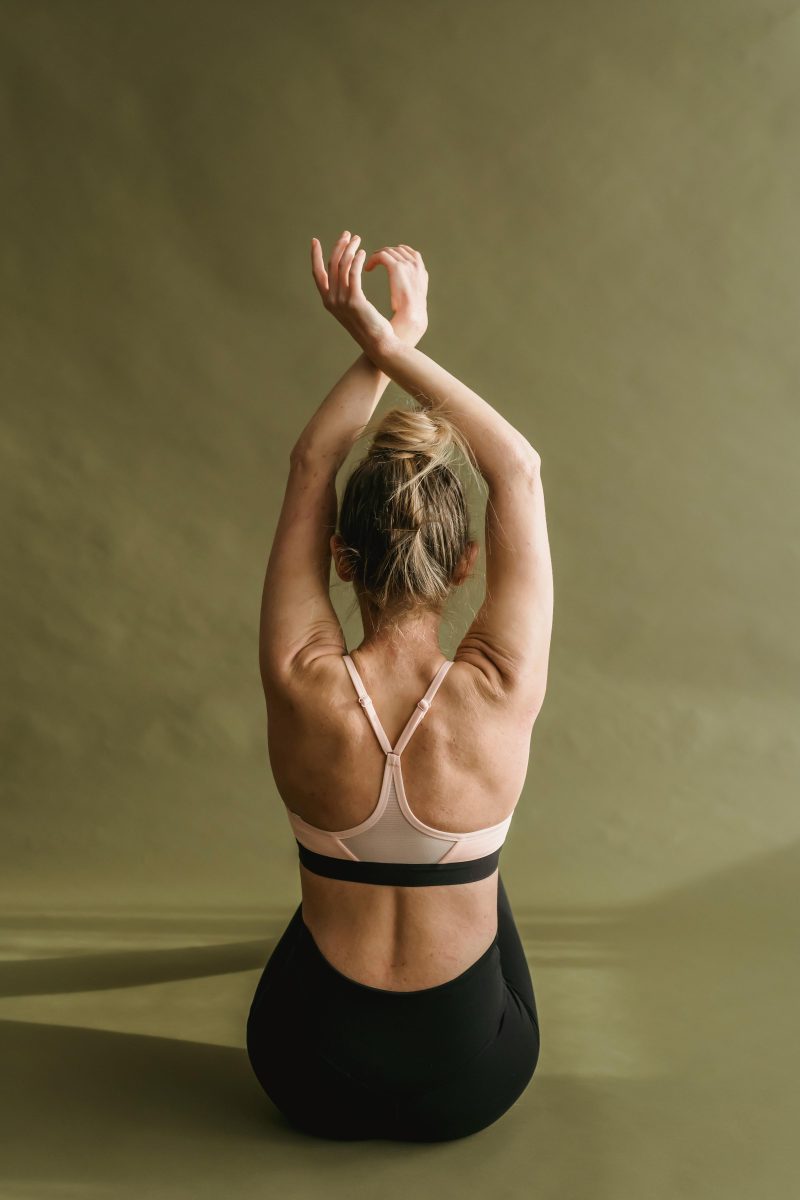Last Updated on: 14th July 2024, 09:06 am
Introduction to Quick Workouts

Staying active is not just about maintaining physical health; it’s a cornerstone of productivity and mental well-being. In the hustle of daily life, finding time for exercise can be challenging. Yet, the solution might be simpler and quicker than we think. Quick workouts, especially during lunch breaks, offer a practical way to integrate fitness into our busy schedules. These short bursts of activity can be the key to staying energized and focused throughout the day.
- Transform your lunch break into a revitalizing session.
- Quick workouts, ranging from 10 to 30 minutes, can easily fit into this window.
- Break the monotony of a sedentary workday, boosting both mood and productivity.
The benefits of midday exercise are manifold. Engaging in physical activity during the day can improve mental clarity, enhance mood, and even help manage stress levels. It’s a powerful way to reset and recharge, ensuring that we return to our tasks more focused and energized than before. By incorporating quick workouts into our lunch breaks, we’re not just taking care of our bodies; we’re also investing in our overall well-being and efficiency.
Understanding the Basics of a Quick Workout

At the heart of a quick workout lies the promise of efficiency and effectiveness. These workouts are designed to deliver maximum benefits in minimal time, making them perfect for those moments when every minute counts. The goal is simple: to keep you fit, energized, and focused, without demanding hours of your day.
Key Components of a Quick Workout
- Warm-up: Prepares your body for the intensity ahead, reducing the risk of injury.
- HIIT: Offers a powerful burst of aerobic and anaerobic exercise that torches calories and boosts cardiovascular health.
- Strength exercises: Target major muscle groups to build muscle and enhance metabolic rate.
- Cool-down: Gradually lowers your heart rate, helping your body to recover.
Time Management Tips for Lunch Break Workouts
- Plan your workout in advance to eliminate decision-making time.
- Opt for exercises that require minimal equipment, or better yet, no equipment at all.
- Consider high-intensity routines that combine cardio and strength for a comprehensive workout in less time.
- Keep your workout gear at the ready to streamline the transition from work mode to workout mode.
Quick workouts during lunch breaks are not just a way to stay in shape; they’re a powerful tool for enhancing your overall quality of life. By integrating these efficient exercise sessions into your daily routine, you’re not only investing in your physical health but also in your mental and emotional well-being. With the right approach, even the busiest schedules can accommodate the transformative power of exercise.
High-Intensity Interval Training (HIIT) for Lunch Breaks

High-Intensity Interval Training, or HIIT, is a game-changer for those pressed for time. This training method alternates between short bursts of intense activity and brief periods of rest or lower-intensity exercise. It’s the epitome of efficiency, making it an ideal choice for lunchtime workouts. The beauty of HIIT lies in its adaptability to various fitness levels and its ability to deliver significant health benefits in a condensed timeframe.
- A typical HIIT session can be completed in 20 minutes or less, fitting perfectly into a lunch break.
- After a quick warm-up, dive into a circuit of bodyweight exercises.
- For beginners, start with longer rest intervals or reduce the intensity of each exercise.
- Seasoned athletes might shorten rest periods further or incorporate more challenging variations.
HIIT’s versatility means it can be tailored to fit anyone’s fitness level, making it an inclusive option for a quick, yet effective, lunch break workout. Whether you’re just starting your fitness journey or looking to maintain your athletic performance, HIIT can be adjusted to meet your needs, ensuring a productive and energizing midday break.
Strength Training Without Equipment

Strength training without equipment is a cornerstone of fitness, offering profound benefits for overall health and well-being. It enhances muscle strength, boosts metabolic rate, and improves bone density, contributing significantly to a healthier lifestyle. Moreover, it’s accessible, allowing anyone to engage in effective workouts without the need for a gym membership or expensive equipment.
- Bodyweight exercises: Push-ups, squats, lunges, and planks target major muscle groups.
- Creating a balanced routine: Start with a brief warm-up, cycle through bodyweight exercises, and finish with a cool-down.
- Incorporate variations: Challenge your body and prevent plateauing.
Integrating strength training into your lunch break not only maximizes your time but also provides a powerful boost to your physical and mental health. It’s a practical, efficient way to maintain fitness and energy levels, even on the busiest days. With no equipment required, you can enjoy the benefits of strength training anytime, anywhere, making it an invaluable addition to your daily routine.
Yoga and Stretching: Quick and Effective Stress Relief

Yoga and stretching stand out as beacons of tranquility in the fast-paced world we navigate. These practices not only enhance flexibility but also play a pivotal role in stress reduction. By engaging in yoga or stretching, we tap into a deep well of calm, easing the tension that accumulates in our bodies and minds throughout the day.
Imagine a 15-minute routine, perfectly tailored for the office or any small space, that could transform your lunch break into an oasis of peace. This routine begins with gentle neck and shoulder stretches, easing the stiffness that comes from prolonged sitting. Transitioning into a series of yoga poses, such as the Cat-Cow for spinal flexibility and the seated Forward Bend to release back tension, the sequence flows smoothly, requiring no more than a mat and your willingness to pause and connect with your body.
Incorporating mindfulness and breathing techniques is the golden thread that ties this practice together. With each stretch, focus on deep, slow breaths to enhance the relaxation effect. Visualize stress melting away with every exhale, and with every inhale, draw in peace and clarity. This mindful approach amplifies the benefits of the physical movements, creating a holistic experience that rejuvenates both body and mind.
Tips for integrating this practice into your daily routine include setting a regular time, keeping a yoga mat handy, and perhaps most importantly, giving yourself permission to take this time for yourself. Even on the busiest days, remember that dedicating just 15 minutes to this routine can significantly uplift your well-being.
Yoga and stretching are more than just physical exercises; they are a sanctuary for the mind. By making them a part of your lunch break, you not only combat stress but also enhance your overall productivity and focus for the afternoon ahead. Embrace these practices as your secret weapon against the demands of modern life, and watch as they transform not just your lunch break, but your entire approach to wellness.
Nutrition and Hydration: The Workout Catalysts

Midday workouts demand strategic fueling to maximize performance and recovery. Proper nutrition and hydration serve as the foundation for a successful exercise regimen, particularly when time is of the essence. A well-fueled body ensures sustained energy levels and optimal muscle function during your workout, while post-exercise nutrition aids in recovery and muscle repair.
Pre-Workout Nutrition
Before diving into your workout, consider light, energy-boosting snacks:
- A banana or an apple paired with a handful of almonds provides a quick source of carbohydrates and protein, delivering a steady stream of energy without the heaviness.
- Greek yogurt with a drizzle of honey or a small serving of oatmeal topped with berries can also offer the necessary fuel without slowing you down.
Hydration Essentials
Hydration is crucial and should not be overlooked:
- Begin hydrating well before your workout to ensure your body is adequately prepared.
- Sipping on water throughout the morning leads to optimal hydration levels by the time your workout begins.
- During exercise, continue to drink small amounts regularly to replace fluids lost through sweat.
- Post-workout, rehydrate with water or an electrolyte-rich drink to replenish any sodium and potassium deficits, aiding in recovery and preventing muscle cramps.
Post-Workout Refueling
After your workout, it’s essential to replenish your energy stores and provide nutrients for muscle repair:
- A smoothie with protein powder, spinach, and a banana offers a refreshing and restorative blend of protein, vitamins, and carbohydrates.
- Alternatively, a turkey and avocado wrap or a quinoa salad with mixed vegetables can satisfy hunger and support muscle recovery without feeling overly full.
By prioritizing nutrition and hydration before, during, and after your workout, you’ll not only enhance your performance but also accelerate your recovery, ensuring you’re ready to take on the rest of your day with vigor and vitality.
Making It a Habit: Tips for Consistency

Incorporating lunchtime workouts into your daily routine requires a blend of strategy and motivation. The key is to view these midday exercise sessions not as optional but as non-negotiable parts of your day. Here’s how to make it a habit that sticks.
Strategies for Incorporating Lunchtime Workouts
Start by scheduling your workouts as you would any important meeting. This mental shift elevates the workout’s priority status. Next, streamline your routine by choosing workouts that are both effective and efficient, such as high-intensity interval training (HIIT) or bodyweight circuits. These can deliver impactful results without eating into your break time. Lastly, prepare your workout gear the night before. This simple step eliminates barriers, making it easier to transition from work mode to workout mode.
How to Stay Motivated and Track Progress
Motivation thrives on progress. Keep a workout log to track your exercises, repetitions, and any improvements in your performance. Celebrate milestones, no matter how small, to fuel your motivation. Additionally, vary your workouts to keep them exciting and challenging. This not only prevents boredom but also ensures that your body continues to adapt and grow stronger.
The Role of Accountability Partners or Fitness Apps
Accountability is a powerful tool. Pairing up with a colleague who shares your fitness goals can provide a mutual source of encouragement and commitment. On days when meeting in person isn’t possible, fitness apps serve as a digital accountability partner. Many apps offer features like workout tracking, reminders, and virtual challenges that keep you engaged and focused on your goals. Whether it’s through human connection or technology, having that external source of accountability can significantly enhance your consistency.
Ultimately, the journey to making lunchtime workouts a consistent part of your routine is personal and unique. By employing these strategies, staying motivated, and leveraging the support of partners or apps, you’re setting the stage for a healthier, more energized self. Remember, consistency is key. With each workout, you’re not only breaking the monotony of a sedentary workday but also investing in your long-term health and well-being.
In Closing
Quick workouts are your gateway to a healthier life. They embody resilience, transforming lunch breaks into a source of strength and vitality. By seamlessly integrating exercise into our daily routines, we not only combat the sedentary lifestyle but also unlock a wellspring of mental clarity and emotional balance. This article has charted a path from the simplicity of HIIT and bodyweight exercises to the tranquility of yoga, underpinned by the crucial roles of nutrition and hydration, all tailored for the time-constrained. Embrace these practices as a commitment to your well-being, and let each lunch break be a step towards a more energized, focused, and fulfilled self.
Quick Workouts for Lunch Breaks FAQs
While high-intensity workouts are effective for quick sessions, there is a risk of injury if exercises are performed improperly or without adequate warm-up. It’s important to listen to your body and adjust the intensity to match your fitness level. Ensuring proper form and including a warm-up and cool-down in your routine can help mitigate these risks.
Yes, you can achieve an effective workout during your lunch break. High-intensity interval training (HIIT) or circuit training can maximize calorie burn and increase fitness levels within a short period, typically 20-30 minutes. These workouts are designed to be intense and efficient, targeting multiple muscle groups with minimal equipment needed.
Yes, quick workouts during lunch breaks can contribute to weight loss. Consistently incorporating high-intensity or strength training exercises can increase your metabolic rate and burn calories, aiding in weight loss. It’s important to combine these workouts with a balanced diet for optimal results.
A quick cool down can be achieved through light stretching or a brief walk. This helps to gradually lower your heart rate and prevent muscle stiffness, making it easier to transition back to work activities. Spending just a few minutes on cooling down can significantly reduce discomfort and improve recovery time.
Staying motivated for lunch break workouts can be achieved by setting specific fitness goals and tracking your progress. Having a workout buddy or joining a fitness challenge can also provide accountability and encouragement. Mixing up your workout routine to keep it interesting and challenging is another key strategy.
Managing sweat without a shower can be done by using body wipes, applying a fresh layer of deodorant, and changing into clean clothes. These steps can help you feel refreshed and minimize body odor, making it more comfortable to return to work. Additionally, wearing moisture-wicking fabrics during your workout can help reduce sweat buildup.
Eating after a quick workout is important to aid in recovery, even if you’re not feeling hungry. A small, protein-rich snack can help repair muscles and replenish energy stores, ensuring your body recovers properly and maintains performance. This is crucial for sustaining energy levels for the rest of the day and for your next workout.
You don’t need a gym or equipment to have an effective lunch break workout. Bodyweight exercises, running, or brisk walking are excellent options that can be done anywhere. These activities provide cardiovascular and strength benefits, making them a versatile choice for those without access to a gym.
Bodyweight exercises are ideal for quick lunch break workouts. Exercises like push-ups, squats, lunges, and planks can be done anywhere and provide a full-body workout without the need for gym equipment. This flexibility allows for a variety of workouts that can be easily adjusted to fit into your available time and space.
Scheduling your workout break as you would any important appointment is the best way to ensure you take it. Treat this time as non-negotiable, and remind yourself of the benefits it brings to your health and productivity. Preparing your workout gear in advance can also eliminate barriers, making it easier to commit.
Orlando is a all round athlete from Australia, now resident in Germany. His sports of passion of American Football(Offensive line), weight training and indoor rock climbing where he uses his 195cm wing span to his advantage.



